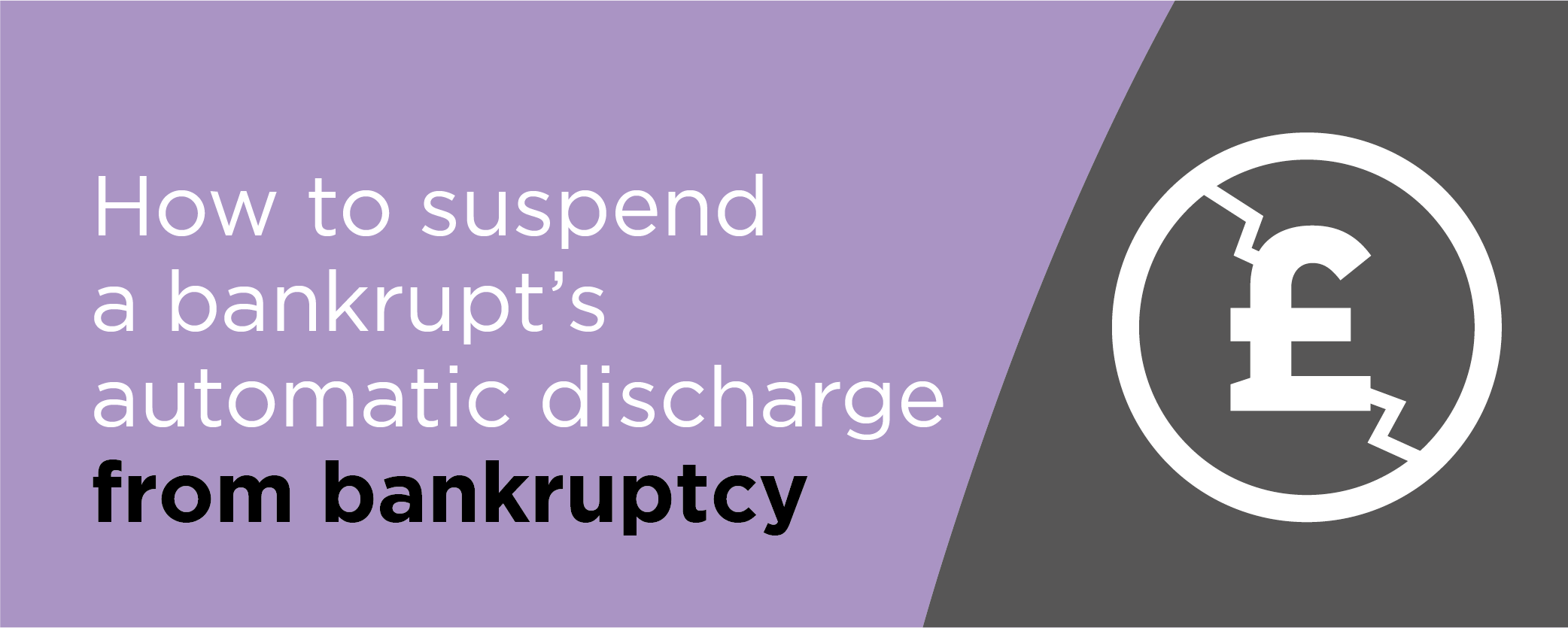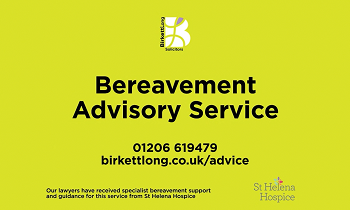- Basildon 01268244144
- Chelmsford 01245453800
- Colchester 01206217300
- London 020 4586 1280

A bankrupt person is usually automatically discharged from bankruptcy on the 12-month anniversary of being made bankrupt. When a bankrupt is discharged, it frees them from the restrictions of bankruptcy and most of their bankruptcy debts under section 281 of the Insolvency Act 1986 (“IA86”).
Bankrupt’s obligations under IA86
A bankrupt has obligations they must comply with under the IA86. A bankrupt has a general duty to cooperate with its trustee in bankruptcy (the person(s) appointed to realise and distribute the bankrupt’s estate to its creditors) by providing information, attending meetings, and undertaking other required acts. It is important that the bankrupt fully cooperates.
Grounds for suspending discharge from bankruptcy
If a bankrupt has failed or fails to comply with its obligations, the official receiver/trustee in bankruptcy may apply to the court to suspend the discharge under section 279(3) IA86. The application must be made before the first anniversary of the bankruptcy. The discharge may be ordered for a fixed period or fulfil a specified condition.
Implications of a suspended discharge order
A suspension of discharge order:
Protects the trustee in bankruptcy’s ability to gather information to assess whether the bankrupt may contribute to their estate from their income
Preserves the trustee’s ability to claim property acquired after the anniversary of the bankruptcy order for the benefit of the bankruptcy estate
Extends the time for applying for a bankruptcy restrictions order or agreeing a bankruptcy restrictions undertaking
Extends the period of time for taking into account misconduct or committing bankruptcy offences
Aim of a suspension of discharge from bankruptcy
The aim of suspending a discharge from bankruptcy is to penalise a non-compliant bankrupt and incentivise them to comply with their obligations fully. Extending the duration of the bankruptcy ensures that the non-compliant bankrupt:
Continues to suffer the restrictions and disabilities of bankruptcy and
Comply with their statutory obligations
A bankrupt cannot discharge its own bankruptcy
The bankrupt cannot apply to suspend their own discharge from bankruptcy under the provisions of the IA86. However, the court does have jurisdiction to make an interim order if an undischarged bankrupt satisfies the relevant criteria and applies on notice. The court will only make this order where appropriate and in exceptional circumstances.
The procedure for suspending bankruptcy discharge
The Official Receiver/trustee in bankruptcy may make an application under section 279(3) IA86 to suspend the automatic discharge. The application should be made/served before the first anniversary of the bankruptcy order being made. As such, the application must be made in good time before the first anniversary to ensure service is not defective. If the service was defective, the court does have the power to validate the service retrospectively if the applicant can show good reason.
The Official Receiver/trustee must file, with their application, evidence supporting their application, setting out the reasons why it appears that such an order should be made.
The court must then fix a venue for the hearing of the application and deliver notice of it to:
The Official Receiver
The trustee and
The bankrupt
Copies of the Official Receiver’s report must be delivered to the bankrupt and their trustee (if not the Official Receiver) at least 21 days before the date fixed for the hearing. Additionally, copies of the trustee’s evidence in support of their application must be delivered by the trustee to the Official Receiver and the bankrupt at least 21 days before the date fixed for the hearing.
If the bankrupt intends to deny or dispute any statements in the Official Receiver’s or trustee’s evidence in support of their application, they must not later than five business days before the date of the hearing file with the court a notice specifying the statements which they intend to deny or dispute. Copies of their notice must be delivered to the Official Receiver and any trustee not less than three business days before the date of the hearing.
If the court makes an order suspending the bankrupt’s discharge, copies of the order must be delivered by the court to:
The Official Receiver
The trustee and
The bankrupt
Lifting an order for the suspension
In accordance with rule 10.143(1) of the Insolvency Rules 2016, a bankrupt may apply to the court for an order lifting the suspension. This may be on the grounds that they consider the suspension has ended or they have complied with the conditions imposed upon them.
Compliance and proactive measures
A bankrupt should ensure it complies with its obligations by fully cooperating with the
Official Receiver/trustee to avoid an application for a suspension of automatic discharge from bankruptcy being made.
Should the Official Receiver/trustee find they are faced with a bankrupt who is non-cooperative and are unable to gather the information needed to administer and investigate the affairs of the bankrupt, they should consider an application to suspend the automatic discharge from bankruptcy in good time before the first anniversary of the bankruptcy order.
We are experts in advising on insolvency matters. For a confidential and no-obligation initial discussion to see how we may help, please contact the Insolvency Team by contacting Kevin Sullivan on 01206 217376 or email kevin.sullivan@birkettlong.co.uk or Charlotte Burkert on 01245 453844 or email charlotte.burkert@birkettlong.co.uk.



Comments